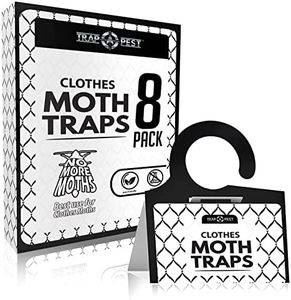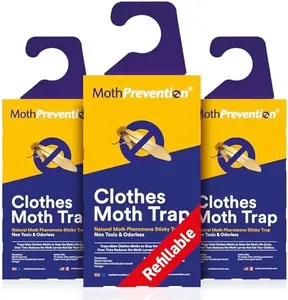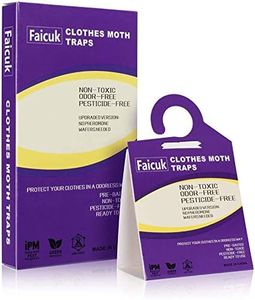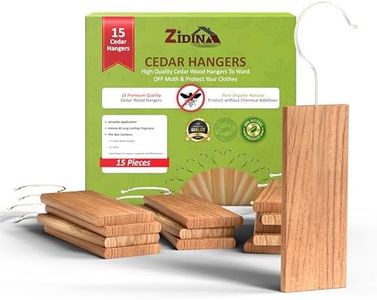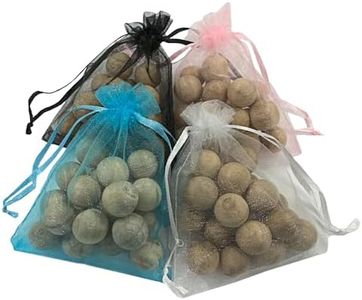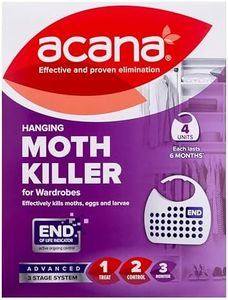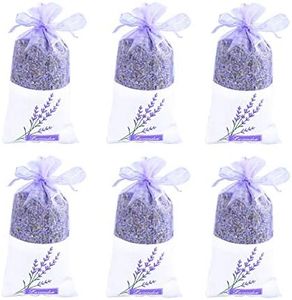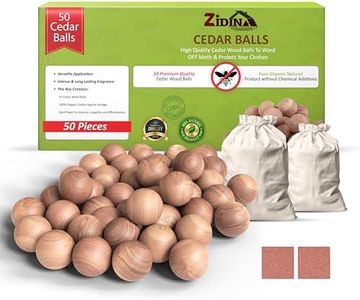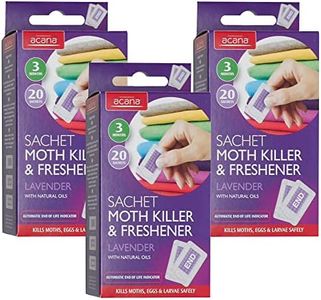We Use CookiesWe use cookies to enhance the security, performance,
functionality and for analytical and promotional activities. By continuing to browse this site you
are agreeing to our privacy policy
10 Best Moth Repellents
From leading brands and best sellers available on the web.#1
Winner
Buying Guide for the Best Moth Repellents
Choosing the right moth repellent is important in order to protect your clothes, fabrics, and stored items from damage caused by moths. Whether you are looking to safeguard woolens, seasonal clothing, or pantry items, understanding how moth repellents work and which type fits your needs will help you make an informed decision. Consider where you want to use the repellent, how sensitive you are to odors or chemicals, and how long you need protection to last.Type of RepellentMoth repellents come in various forms like sachets, sprays, blocks, balls, or strips. This spec is important because each type works in a slightly different way and may be suited for different use-cases. Sachets and blocks are best for drawers and closets, sprays are ideal for treating larger areas or direct surfaces, and mothballs are more traditional but have strong odors and chemicals. Pick the type based on the location and how frequently you access it—sachets are good for clothes in regular use, while balls or strips might be best for long-term storage.
Active IngredientThe active ingredient is what drives the moth-repelling effect and affects safety, scent, and effectiveness. Common natural ingredients are cedar, lavender, or essential oils, which are gentle and often chosen by those sensitive to chemicals but may not be as long-lasting. Chemical actives like naphthalene or paradichlorobenzene are stronger and longer-lasting but have more powerful scents and should be handled carefully, especially in homes with children and pets. Consider if you prefer natural solutions for regular use or if you need the heavy-duty effect of chemicals for storerooms or severe infestations.
Longevity / Duration of EffectivenessThis spec describes how long the repellent continues to work after being placed or sprayed. Some last a few weeks, while others remain active for months. This is important because you might want something low-maintenance for rarely accessed storage or something easily replaceable for daily-use spaces. If you need to minimize upkeep, look for longer-lasting repellents. For seasonal changes or frequent wardrobe rotations, short-term products may suffice if you’re comfortable replacing them regularly.
ScentScent is an important consideration because moth repellents can have strong or lingering odors that affect clothing and living spaces. Natural scents like cedar and lavender are usually milder and more pleasant, while chemical repellents might have sharper, more persistent smells. If you or your household members are sensitive to strong fragrances, lean towards low-odor or naturally scented products. For enclosed or spare rooms, you may tolerate stronger odors to achieve greater repellent power.
Safety & SuitabilityThis refers to how safe the product is for use around children, pets, and food items. Some chemical moth repellents are toxic if ingested and require careful handling, whereas natural versions are generally safer but still should be kept out of small kids’ reach. Additionally, if you’re protecting pantry items, look for food-safe or specifically labeled repellents. Always choose a product that matches the members and activities in your home for peace of mind.
